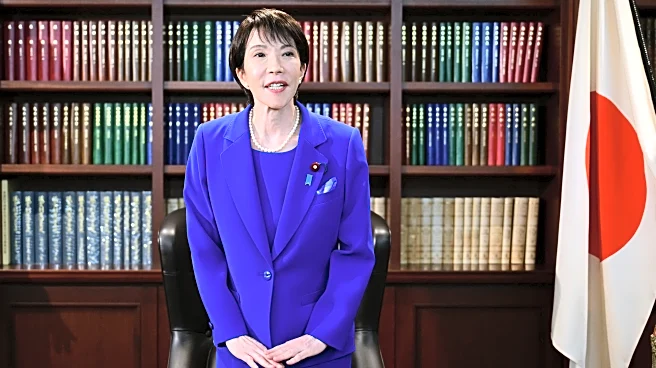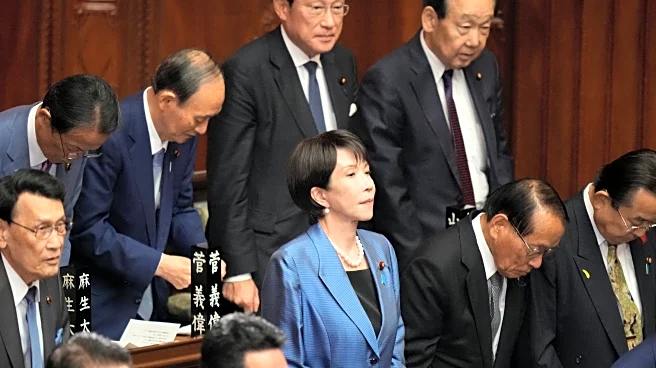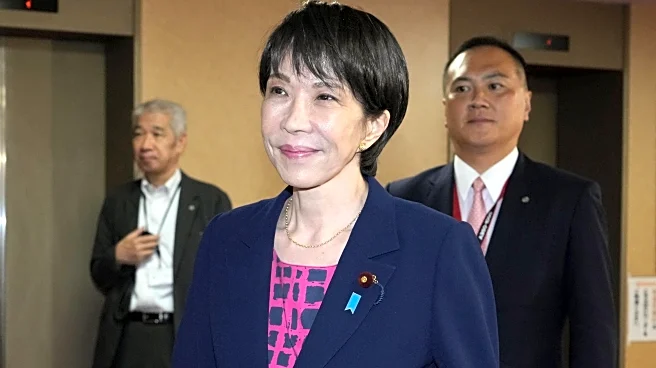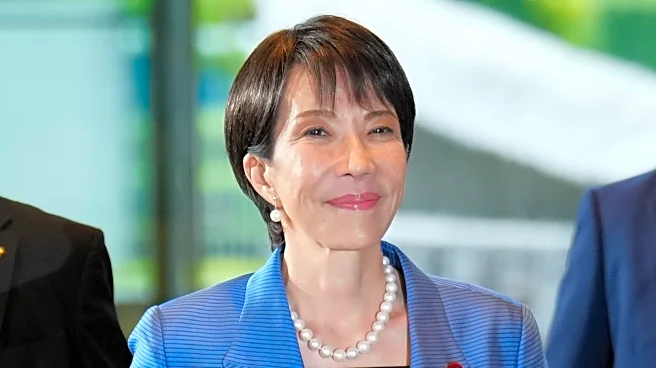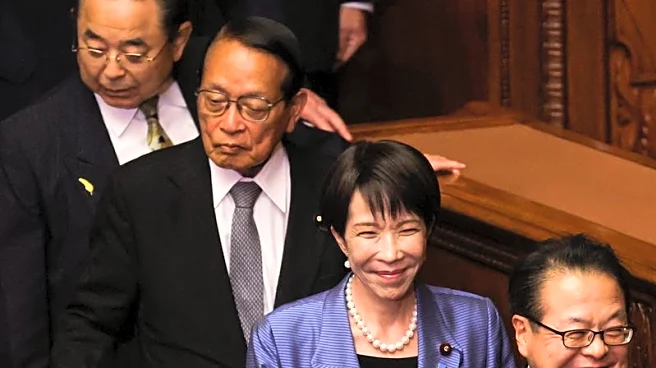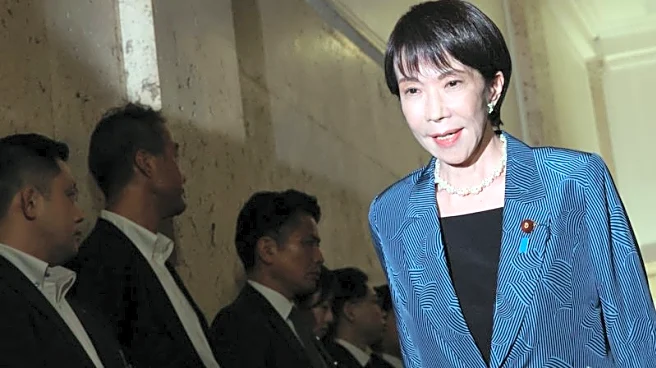What's Happening?
Sanae Takaichi has been elected as Japan's first female prime minister, marking a historic moment in the country's political landscape. Takaichi, a member of the Liberal Democratic Party (LDP), secured her position by winning 237 votes in the lower house
of parliament, eliminating the need for a runoff. Her election follows a coalition agreement between the LDP and the Japan Innovation Party (JIP), which includes policies such as reducing parliamentary seats and pausing food consumption tax. Despite this milestone, Takaichi faces challenges, including low approval ratings for the LDP and a fragile coalition, as the JIP has opted not to take cabinet positions.
Why It's Important?
Takaichi's election is significant as it breaks a gender barrier in Japan's political sphere, where women have been historically underrepresented. However, her leadership comes at a time when the LDP is experiencing low public trust and approval. The coalition with the JIP, while necessary for governance, is precarious, as the JIP has chosen to support the government externally, allowing for an easy exit if disagreements arise. This political instability could impact Japan's domestic and international policies, especially as the country navigates economic challenges and diplomatic relations.
What's Next?
Takaichi's administration will need to address the coalition's fragility and work towards gaining public trust. The upcoming visit by President Trump presents an opportunity for Takaichi to strengthen Japan-U.S. relations, which could bolster her government's standing. However, the LDP's past electoral losses and the JIP's external support suggest that Takaichi's leadership will be tested by both domestic and international pressures.


